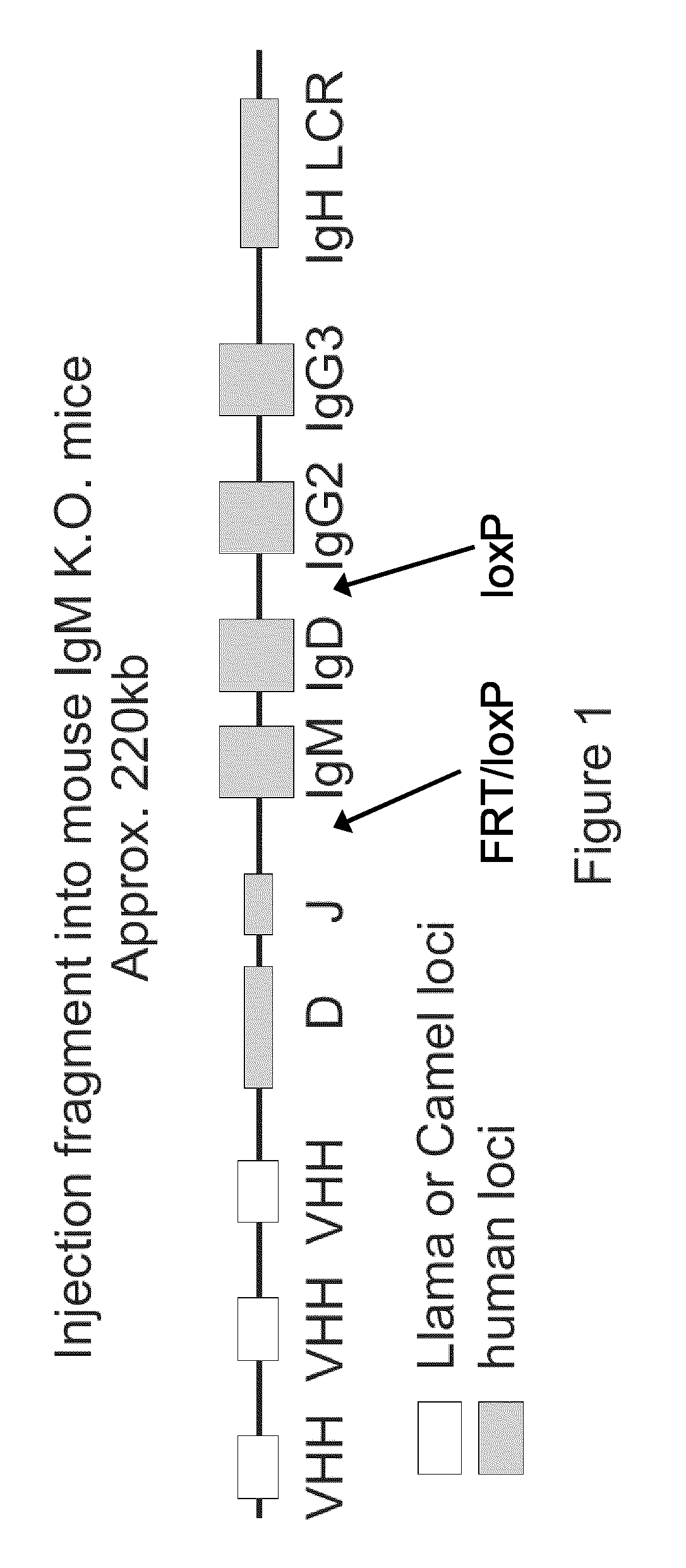Immunoglobulin 1
a technology of immunoglobulin and immunoglobulin, which is applied in the field of immunoglobulin 1 to achieve the effects of preventing bacterial expression and not performing post-translational modifications
- Summary
- Abstract
- Description
- Claims
- Application Information
AI Technical Summary
Benefits of technology
Problems solved by technology
Method used
Image
Examples
Embodiment Construction
General Techniques
[0084]Unless defined otherwise, all technical and scientific terms used herein have the same meaning as commonly understood by one of ordinary skill in the art (e.g., in cell culture, molecular genetics, nucleic acid chemistry, hybridisation techniques and biochemistry). Standard techniques are used for molecular, genetic and biochemical methods (see generally, Sambrook et al., Molecular Cloning: A Laboratory Manual, 2d ed. (1989) Cold Spring Harbor Laboratory Press, Cold Spring Harbor, N.Y. and Ausubel et al., Short Protocols in Molecular Biology (1999) 4th Ed, John Wiley & Sons, Inc. which are incorporated herein by reference) and chemical methods. In addition Harlow & Lane., A Laboratory Manual Cold Spring Harbor, N.Y, is referred to for standard Immunological Techniques.
VH / h Heavy Chain Loci of the Present Invention
[0085]In a first aspect, the present invention provides a method for the production of a VHH single heavy chain antibody in a mammal comprising the ...
PUM
| Property | Measurement | Unit |
|---|---|---|
| Energy | aaaaa | aaaaa |
| Electric dipole moment | aaaaa | aaaaa |
Abstract
Description
Claims
Application Information
 Login to view more
Login to view more - R&D Engineer
- R&D Manager
- IP Professional
- Industry Leading Data Capabilities
- Powerful AI technology
- Patent DNA Extraction
Browse by: Latest US Patents, China's latest patents, Technical Efficacy Thesaurus, Application Domain, Technology Topic.
© 2024 PatSnap. All rights reserved.Legal|Privacy policy|Modern Slavery Act Transparency Statement|Sitemap

